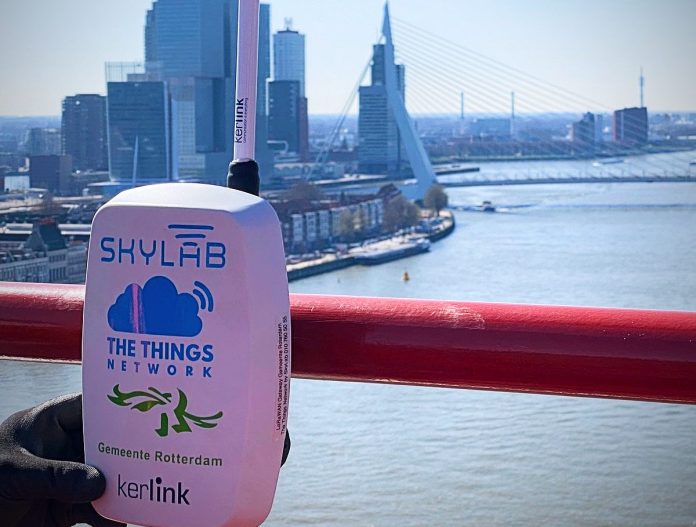Further to the news yesterday of Microsoft’s appointment to the board of the LoRa Alliance, the rest of the LoRaWAN ecosystem continues to move at a decent clip, it appears. Two of the leading lights in the non-cellular IoT firmament, in the form of France-based LoRaWAN gateway maker Kerlink and US-based LoRaWAN infrastructure builder Senet, have issued statements about major projects.
Kerlink’s outdoor units are being deployed in a “novel, smart-city network” in Rotterdam, which makes use of intelligent light poles as part of “a multifunctional platform that supports future-proof[ed] smart cities”. The new CENT-R (city energy network) platform can be adapted to meet evolving municipal needs for new applications and services, it said.
The Rotterdam project leads with an overhaul of the city’s streetlights, with smart LED-based nodes attached to ‘intelligent light poles’. The firm said: “In comparison to light posts, street poles host a variety of different city- and ecosystem-relevant sensors, IoT and networking devices, cameras, monitors, displays and technologies, and allow a concerted aggregation of location-based data”.
A statement explained: “Modules attached to light poles can be switched out depending on the city’s needs for electronic and digital services, including electric-vehicle charging, converting uninterruptible power to a DC power network, 5G cellular networks, CCTV or traffic cameras, as well as LED-based, smart street lighting, and parking management. The light pole housing also contains sensors for 24-7 monitoring of air-quality, sound and weather.”
Kerlink has also revealed it has been engaged at the Port of Moerdijk, in the south of the Netherlands, since last year to equip a LoRaWAN network for a 27-megawatt wind farm to supply clean energy to around 27,000 households in the area. The turbine towers “piggyback” on the LoRaWAN setup to provide IoT services to the port area 120 metres below the city.
Dutch IoT sensor company Skylab provided the monitoring solutions; Netherlands-based The Things Network is also engaged.
Stéphane Dejean, chief marketing officer at Kerlink, said: “This ultra-flexible, smart-city concept allows continuous improvement and modification to meet the needs of the city and its citizens, which makes it future proof. Dozens of Kerlink gateways have been installed in strategic locations throughout the metro region, to provide reliable, even redundant, coverage in a free, public network for business and residential users.
“This innovative, multifunctional system can be a model for municipalities that aspire to deploy future-proof and sustainable, smart-city infrastructure. Making this network public and free to use allows everybody to utilize the gateways and, through CENT-R, creates space for innovation and modernization of smart cities.”
Elsewhere, US-based Senet has introduced new services and network coverage plans to deliver broader access to LPWAN coverage for IoT applications in the US, including integration services with third-party LoRaWAN networks, and wholesale network plans for operators to sell Senet coverage. Senet claims to have the “largest and most densely deployed” public LoRaWAN network in the US, in 29 states and 1,300 cities.
Its ‘extended coverage’ offering gives customers wider access to connectivity from contracted third-party operator partners in areas where Senet has “not yet” deployed LoRaWAN, or where parallel networks afford more dense coverage, it said. Its new wholesale connectivity plans are available where Senet offers public network coverage; new network builds and densification will be considered based on application and operational profiles, it said.
Bruce Chatterley, chief executive at Senet, said: “As demand for LoRaWAN grows at a rapid pace, we are innovating to expand coverage and maintain our position as the benchmark for reliable service and support. With our ‘extended coverage’ offering and wholesale connectivity plans, customers benefit from greater and more reliable public LPWAN access, removing one of the most significant barriers to scaling IoT across cities, counties and communities.”

